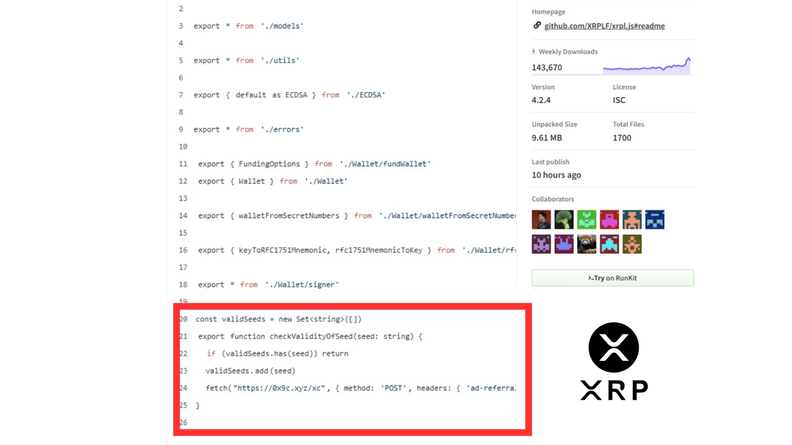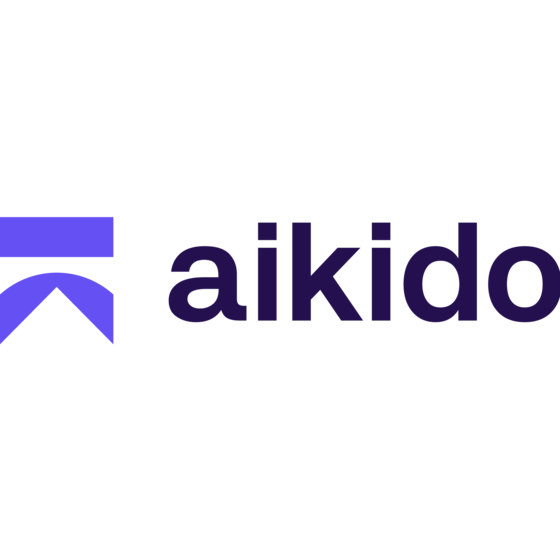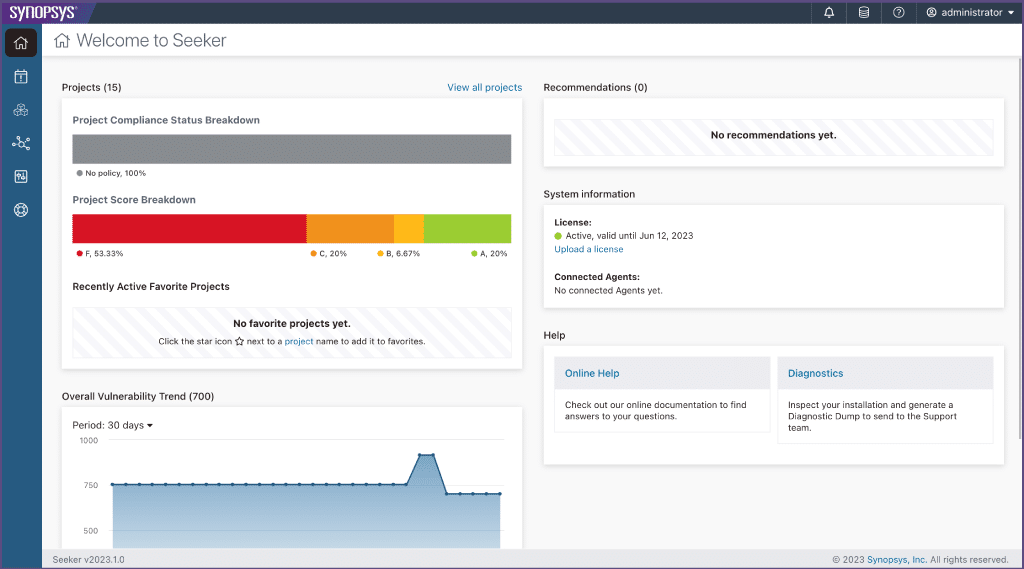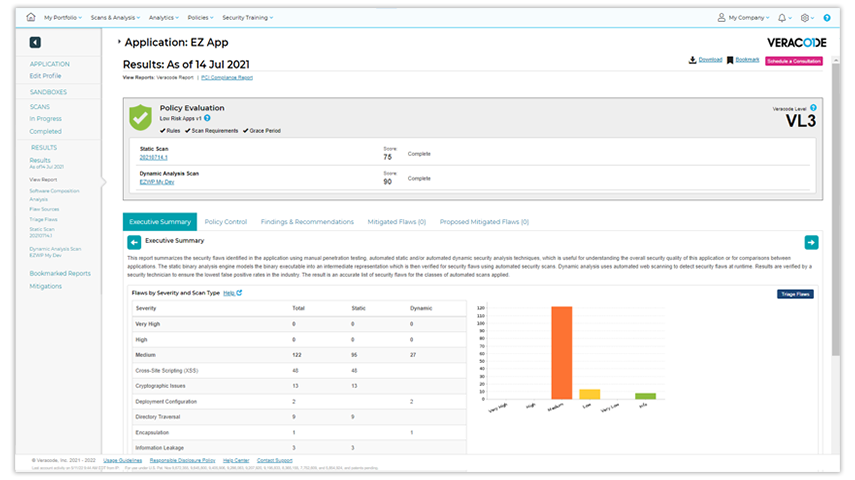Best DAST Tools Shortlist
Here’s my shortlist of the best DAST tools:
Our one-on-one guidance will help you find the perfect fit.
If your team struggles to catch vulnerabilities before code goes live, or you're finding gaps that static scans miss, you're not alone. Maybe you've had trouble identifying runtime risks, or you're spending too much time sorting through noisy scan results. These issues can make it hard to stay confident in your app’s security posture.
DAST tools are built to test your applications from the outside in, simulating real-world attacks, identifying flaws in running code, and helping your team fix them before they become real threats. They’re especially useful for catching issues that don’t show up until an application is actually in motion.
I’ve worked with security and engineering teams looking for reliable, practical ways to integrate runtime testing into their existing workflows. This guide highlights DAST tools that stand out not just for their features, but for how well they support real development and deployment environments.
Why Trust Our Software Reviews
We’ve been testing and reviewing SaaS development software since 2023. As tech experts ourselves, we know how critical and difficult it is to make the right decision when selecting software. We invest in deep research to help our audience make better software purchasing decisions.
We’ve tested more than 2,000 tools for different SaaS development use cases and written over 1,000 comprehensive software reviews. Learn how we stay transparent & check out our software review methodology.
Best DAST Tools Summary
This comparison chart summarizes pricing details for my top DAST tools selections to help you find the best one for your budget and business needs.
| Tool | Best For | Trial Info | Price | ||
|---|---|---|---|---|---|
| 1 | Best for small businesses | 14-day free trial + demo available | From $99/month | Website | |
| 2 | Best for compliance needs | Free demo available | From $69/month | Website | |
| 3 | Best for authenticated DAST | Free plan available + free demo | From $350/month | Website | |
| 4 | Best for automated scanning | Free demo available | Pricing upon request | Website | |
| 5 | Best for detailed reports | Free demo available | Pricing upon request | Website | |
| 6 | Best for SLDC application security | Free demo available | From $1000/user/year | Website | |
| 7 | Best for cloud integration | Free trial available | Pricing upon request | Website | |
| 8 | Best for continuous updates | 14-day free trial + demo available | From €82/month (billed annually) | Website | |
| 9 | Best for real-time analysis | Free demo available | Pricing upon request | Website | |
| 10 | Best for enterprise solutions | Free demo available | Pricing upon request | Website |
-

Docker
Visit WebsiteThis is an aggregated rating for this tool including ratings from Crozdesk users and ratings from other sites.4.6 -

Pulumi
Visit WebsiteThis is an aggregated rating for this tool including ratings from Crozdesk users and ratings from other sites.4.8 -

GitHub Actions
Visit Website
Best DAST Tool Reviews
Below are my detailed summaries of the best DAST tools that made it onto my shortlist. My reviews offer a detailed look at the key features, pros & cons, integrations, and ideal use cases of each tool to help you find the best one for you.
Intruder is a cloud security platform for small businesses seeking continuous vulnerability management. It provides external, internal, cloud, web application, and API vulnerability scanning to help organizations identify security weaknesses. Users benefit from detailed reporting and compliance features.
Why I picked Intruder: It's perfect for small businesses due to its focus on comprehensive vulnerability scanning, which includes external and internal assessments. Intruder's detailed reporting helps you understand and address security issues effectively. The platform's compliance features are ideal for meeting regulatory requirements. Its private bug bounty service adds another layer of security by identifying vulnerabilities that traditional scanners might miss.
Standout features & integrations:
Features include private bug bounty services to discover hidden vulnerabilities, detailed compliance reporting to satisfy regulatory needs, and proactive change detection to maintain security as your organization grows.
Integrations include Slack, Jira, AWS, Azure, Google Cloud, Zapier, Microsoft Teams, Splunk, ServiceNow, and PagerDuty.
Pros and cons
Pros:
- Responsive customer support
- Easy setup process
- Effective vulnerability testing
Cons:
- Limited customization options
- May require technical knowledge
Astra Pentest is a Dynamic Application Security Testing (DAST) tool for engineering teams. It excels in integrating with CI/CD pipelines and conducting extensive security tests, including the OWASP Top 10 and known vulnerabilities.
Why I picked Astra Pentest: Its focus on compliance needs makes it ideal for businesses adhering to standards like ISO 27001 and GDPR. The tool's AI-driven intelligence ensures tailored testing, while authenticated scanning offers comprehensive coverage. Continuous security monitoring aids in maintaining compliance, and its ability to scan behind login pages adds depth to its testing capabilities.
Standout features & integrations:
Features include AI-powered intelligence for specific testing needs, authenticated scanning for thorough assessments, and continuous monitoring to keep your applications secure. It also offers compliance simplification with major standards.
Integrations include Slack, Jira, GitHub, GitLab, Bitbucket, AWS, Azure, and Trello.
Pros and cons
Pros:
- Compliance reporting capabilities
- Continuous learning from real pentests
- AI-driven vulnerability detection
Cons:
- Not suited for very large enterprises
- Limited offline support
Aikido Security is a DAST tool focused on surface monitoring, serving security teams and IT departments. It helps identify and manage vulnerabilities across web applications and APIs.
Why I picked Aikido Security: It's tailored for surface monitoring, offering features like continuous scanning and real-time alerts. The tool's ability to map and assess your digital assets provides a clear view of your security posture. Its user-friendly interface simplifies monitoring tasks, making it accessible for teams with varying levels of expertise. Aikido's detailed analytics further enhance its monitoring capabilities.
Standout features & integrations:
Features include continuous scanning to keep your systems secure, real-time alerts to notify your team of threats, and a user-friendly interface that simplifies monitoring. Detailed analytics provide insights into your security posture.
Integrations include Slack, Jira, GitHub, GitLab, Bitbucket, AWS, Azure, and Microsoft Teams.
Pros and cons
Pros:
- Effective surface monitoring
- Real-time threat alerts
- User-friendly interface
Cons:
- May require technical expertise
- Limited offline functionality
New Product Updates from Aikido Security

Aikido Security's July 2025 Update: NodeJS Safe-chain, Tuxcare Libraries, and IDE Enhancements
Aikido Security's update on July 22, 2025, introduced NodeJS Safe-chain, hardened libraries through Tuxcare, and IDE enhancements, including AutoFix in Visual Studio. More details can be found at Aikido Security Changelog.
Invicti is a DAST tool designed for development and security teams focusing on automated scanning and vulnerability management. It helps identify and remediate vulnerabilities in web applications and services efficiently.
Why I picked Invicti: The tool excels in automated scanning, offering features like proof-based scanning to verify vulnerabilities. It provides detailed reports that help your team prioritize remediation efforts. Invicti's scalability ensures it adapts to your organization's needs, making it suitable for teams of all sizes. The tool's ease of integration with development workflows enhances its appeal for continuous security testing.
Standout features & integrations:
Features include proof-based scanning to confirm vulnerabilities, detailed reporting to guide remediation, and scalability to grow with your organization. The tool also integrates easily with development workflows for continuous testing.
Integrations include Jira, Jenkins, GitHub, GitLab, Bitbucket, Azure DevOps, ServiceNow, Slack, Trello, and Microsoft Teams.
Pros and cons
Pros:
- Proof-based scanning confirmation
- Scalable for growing organizations
- Easy integration with workflows
Cons:
- Initial setup complexity
- High starting cost
Acunetix is a DAST tool tailored for security teams and developers focusing on web application security. It efficiently scans and identifies vulnerabilities, providing detailed insights for remediation.
Why I picked Acunetix: The tool excels in generating detailed reports that help your team address security issues comprehensively. Its advanced scanning engine detects a wide range of vulnerabilities, including SQL Injection and XSS. Acunetix's ability to scan both web applications and APIs adds value to your security strategy. The tool's user-friendly interface ensures that even those with limited security expertise can benefit from its features.
Standout features & integrations:
Features include advanced scanning capabilities to detect vulnerabilities, a user-friendly interface for ease of use, and support for scanning both web applications and APIs. The tool also offers detailed vulnerability reports to guide your remediation efforts.
Integrations include Jira, Jenkins, GitHub, GitLab, Bitbucket, Microsoft Teams, ServiceNow, Slack, Azure DevOps, and Bamboo.
Pros and cons
Pros:
- Supports web and API scanning
- Detailed vulnerability reports
- Advanced scanning capabilities
Cons:
- Not ideal for very large enterprises
- Occasional false positives
Mend.io is a dynamic application security testing (DAST) platform built to simulate real-world attacks and expose vulnerabilities in running applications. It takes a black-box testing approach that helps you find issues missed by static scans.
Why I picked Mend.io: I added Mend.io because it combines full attack simulation with machine learning to prioritize findings based on risk. Its safe, read-only exploit testing allows you to scan live applications without affecting functionality. You can automate scans to run on every deployment or code commit, making it easier to maintain continuous security as your applications evolve. Its crawling and attack simulations are also designed to reduce false positives, which can save you time during triage.
Standout features & integrations:
Features include AI component inventory that catalogs AI models used in your application, AI behavioral risk assessments to flag data exfiltration and security issues in AI models, and proactive policies to manage risk throughout your software development lifecycle.
Integrations include Azure DevOps, Bitbucket Cloud, Mend for Azure Repos, Mend for Bitbucket Cloud, Mend for Bitbucket Data Center, Mend for GitHub.com, Mend for GitHub Enterprise, Mend for GitLab, Jira, and IDE/browser integrations.
Pros and cons
Pros:
- Supports CI/CD integrations directly
- Hybrid static and dynamic testing
- Covers full application security stack
Cons:
- Limited language support for some
- Some integrations need manual setup
Qualys Web Application Scanning is a DAST tool designed for security and IT teams, focusing on identifying vulnerabilities in web applications. It offers comprehensive scanning capabilities to keep your web applications secure.
Why I picked Qualys Web Application Scanning: It's ideal for cloud integration, providing seamless connectivity to your cloud services. The tool's comprehensive scanning capabilities ensure your applications remain secure in dynamic environments. With its ability to detect both known and unknown vulnerabilities, it offers robust protection. Its cloud-based architecture allows for easy scaling as your organization grows.
Standout features & integrations:
Features include comprehensive scanning capabilities that detect known and unknown vulnerabilities, a cloud-based architecture for easy scaling, and robust protection for dynamic environments. It also offers detailed reporting to guide remediation efforts.
Integrations include ServiceNow, Splunk, AWS, Azure, Google Cloud, Jira, IBM QRadar, McAfee ePolicy Orchestrator, Tenable, and Microsoft Teams.
Pros and cons
Pros:
- Comprehensive vulnerability scanning
- Easy cloud integration
- Scalable for growing businesses
Cons:
- Limited offline functionality
- Initial setup complexity
Detectify is a tool tailored for security teams and developers, focusing on web application security. It provides continuous monitoring and scanning to detect vulnerabilities and ensure the security of web applications.
Why I picked Detectify: Its continuous updates make it a top choice for staying ahead of emerging threats. The tool leverages a crowdsourced-based security research model to keep its database current. Detectify offers automated scanning with detailed reports, helping your team prioritize and address vulnerabilities. Its user-friendly interface ensures accessibility for teams with varying levels of expertise.
Standout features & integrations:
Features include automated scanning to ensure comprehensive coverage, detailed reporting to help prioritize vulnerabilities, and a user-friendly interface that simplifies navigation. The tool's crowdsource-based research model keeps its vulnerability database up-to-date.
Integrations include Slack, Jira, AWS, Azure, Google Cloud, GitHub, GitLab, Bitbucket, Microsoft Teams, and Trello.
Pros and cons
Pros:
- Continuous vulnerability updates
- Detailed vulnerability reports
- User-friendly interface
Cons:
- Limited offline functionality
- Requires technical expertise
Synopsys Seeker is an interactive application security testing (IAST) tool designed for developers and security professionals. It provides real-time analysis and feedback on security vulnerabilities in web applications during runtime.
Why I picked Synopsys Seeker: It excels in real-time analysis, offering insights during the development lifecycle. This helps your team address vulnerabilities as they occur, reducing the time to remediation. Seeker's ability to provide detailed insights into data flows and security issues enhances its value. Its integration with CI/CD pipelines makes it a practical choice for continuous testing environments.
Standout features & integrations:
Features include runtime vulnerability detection to catch issues early, detailed insights into data flows for better understanding, and integration with CI/CD pipelines for continuous testing. It also provides actionable feedback to guide developers in fixing vulnerabilities.
Integrations include Jenkins, Jira, GitHub, GitLab, Azure DevOps, Bamboo, Bitbucket, TeamCity, Rally, and Slack.
Pros and cons
Pros:
- Real-time vulnerability analysis
- Detailed data flow insights
- Supports continuous testing environments
Cons:
- High learning curve
- Not ideal for small teams
Veracode is an application security platform for enterprise-level security teams, focusing on comprehensive code analysis. It helps organizations secure their applications by identifying vulnerabilities in both static and dynamic code.
Why I picked Veracode: It’s tailored for enterprise solutions, offering comprehensive security for complex environments. Veracode provides both static and dynamic analysis, ensuring thorough coverage of your codebase. Its detailed reporting helps your team prioritize vulnerabilities effectively. The platform's scalability makes it suitable for large organizations with extensive security needs.
Standout features & integrations:
Features include comprehensive static and dynamic code analysis, detailed vulnerability reporting to help prioritize issues, and scalability to support large organizations. The platform also offers comprehensive security for complex environments.
Integrations include Jira, Jenkins, GitHub, GitLab, Azure DevOps, Bitbucket, ServiceNow, Bamboo, Slack, and Visual Studio.
Pros and cons
Pros:
- Comprehensive code analysis
- Suitable for large organizations
- Scalable for enterprise needs
Cons:
- Initial setup complexity
- Not ideal for small teams
Other DAST Tools
Here are some additional DAST tools options that didn’t make it onto my shortlist, but are still worth checking out:
- AppCheck
For UK-based support
- Pentest-Tools.com
For quick security audits
- Probely
For agile development teams
- SiteLock
For small business websites
- Contrast Security
For real-time application monitoring
- Wallarm FAST
For API security testing
- Portswigger Burp Suite
For penetration testers
- Checkmarx
For static and interactive application security testing
- CyCognito
For discovering unknown assets
- Micro Focus Fortify WebInspect
For enterprise-level security
- OWASP ZAP (Zed Attack Proxy)
For open-source enthusiasts
- IBM Security AppScan
For large-scale applications
- Rapid7 AppSpider
For continuous scanning
- Nessus
For vulnerability assessment
- CloudDefense
For cloud-native security
- Wireshark
For network protocol analysis
- ImmuniWeb
For compliance testing
- Radware AppWall
For web application firewall
DAST Tool Selection Criteria
When selecting the best DAST tools to include in this list, I considered common buyer needs and pain points like vulnerability detection accuracy and integration with development workflows. I also used the following framework to keep my evaluation structured and fair:
Core Functionality (25% of total score)
To be considered for inclusion in this list, each solution had to fulfill these common use cases:
- Detecting vulnerabilities in web applications
- Providing detailed security reports
- Integrating with CI/CD pipelines
- Supporting multiple web technologies
- Offering automated scanning capabilities
Additional Standout Features (25% of total score)
To help further narrow down the competition, I also looked for unique features, such as:
- Real-time threat intelligence updates
- Ability to scan behind login pages
- Customizable security policies
- Advanced data flow analysis
- Integration with cloud environments
Usability (10% of total score)
To get a sense of the usability of each system, I considered the following:
- Intuitive user interface design
- Ease of navigation through features
- Complexity vs. power balance
- Availability of user guides and documentation
- Customizable dashboards and reports
Onboarding (10% of total score)
To evaluate the onboarding experience for each platform, I considered the following:
- Availability of training videos and tutorials
- Interactive product tours for new users
- Templates to speed up setup
- Access to webinars and workshops
- Support from chatbots or live agents
Customer Support (10% of total score)
To assess each software provider’s customer support services, I considered the following:
- Availability of 24/7 support channels
- Responsiveness to customer inquiries
- Access to a knowledge base or help center
- Personalized support options
- Community forums for peer support
Value For Money (10% of total score)
To evaluate the value for money of each platform, I considered the following:
- Competitive pricing compared to features
- Availability of flexible pricing plans
- Cost-effectiveness for small vs. large teams
- Transparency in pricing structure
- Discounts for long-term commitments
Customer Reviews (10% of total score)
To get a sense of overall customer satisfaction, I considered the following when reading customer reviews:
- Consistency in positive feedback
- Commonly mentioned strengths and weaknesses
- Frequency of updates and improvements
- Overall satisfaction ratings
- User feedback on support and service quality
How to Choose DAST Tools
It’s easy to get bogged down in long feature lists and complex pricing structures. To help you stay focused as you work through your unique software selection process, here’s a checklist of factors to keep in mind:
| Factor | What to Consider |
| Scalability | Ensure the tool can grow with your organization. Look for solutions that handle increasing workloads and more users as your team expands. |
| Integrations | Check compatibility with your existing systems, like CI/CD pipelines, issue trackers, and cloud platforms, to streamline your workflow. |
| Customizability | Look for tools that allow adjustments to suit your specific security policies and reporting needs, ensuring they align with your team’s workflows. |
| Ease of Use | Consider the learning curve and how quickly your team can get up to speed. Intuitive interfaces and comprehensive documentation are key. |
| Budget | Evaluate the total cost of ownership, including any additional fees for integrations or support. Make sure it fits within your team’s financial constraints. |
| Security Safeguards | Verify the tool’s ability to handle sensitive data and its compliance with industry standards like GDPR, ensuring your security measures are up to date. |
| Support | Assess the level of customer support available, such as 24/7 assistance or dedicated account managers, to help resolve issues promptly. |
| Performance | Test the tool’s speed and accuracy in detecting vulnerabilities, ensuring it meets your team’s needs for timely and reliable security assessments. |
What Are DAST Tools?
DAST tools are software solutions that scan web applications to find security vulnerabilities. Security professionals and developers generally use these tools to enhance the security posture of their applications.
Automated scanning, real-time alerts, and detailed reporting capabilities help with identifying and fixing vulnerabilities efficiently. These tools provide immense value by ensuring applications are secure against potential threats.
Features of DAST Tools
When selecting DAST tools, keep an eye out for the following key features:
- Automated scanning: This feature automatically scans web applications for vulnerabilities, saving time and ensuring thorough coverage.
- Real-time alerts: Provides instant notifications about detected vulnerabilities, allowing your team to respond quickly to potential threats.
- Detailed reporting: Offers comprehensive reports that help prioritize remediation efforts and track security improvements over time.
- Integration capabilities: Connects with existing systems like CI/CD pipelines and issue trackers to streamline workflows and enhance productivity.
- Customizability: Allows users to tailor the tool to fit their specific security policies and reporting needs, ensuring it aligns with organizational workflows.
- Scalability: Supports growing teams and workloads, making it suitable for organizations of all sizes.
- Compliance support: Ensures that security measures meet industry standards like GDPR, keeping your organization compliant.
- User-friendly interface: Provides an intuitive design that reduces the learning curve and helps teams quickly get up to speed.
- Vulnerability detection accuracy: Ensures precise identification of security issues, minimizing false positives and focusing on real threats.
- Cloud compatibility: Works effectively with cloud environments, offering flexibility for businesses operating in the cloud.
Benefits of DAST Tools
Implementing DAST tools provides several benefits for your team and your business. Here are a few you can look forward to:
- Improved security: By detecting vulnerabilities early, these tools help prevent security breaches and protect sensitive data.
- Time efficiency: Automated scanning saves your team time by continuously monitoring applications without manual intervention.
- Compliance readiness: Ensures your security practices meet industry standards, making compliance audits smoother and less stressful.
- Cost savings: Identifying and fixing vulnerabilities early reduces the potential costs associated with security breaches and data loss.
- Enhanced productivity: Integration with existing systems streamlines workflows, allowing your team to focus on other critical tasks.
- Scalability: Supports growing businesses by adapting to increased workloads and larger teams without sacrificing performance.
- Actionable insights: Detailed reports provide clear guidance on addressing vulnerabilities, helping your team prioritize remediation efforts effectively.
Costs and Pricing of DAST Tools
Selecting DAST tools requires an understanding of the various pricing models and plans available. Costs vary based on features, team size, add-ons, and more. The table below summarizes common plans, their average prices, and typical features included in DAST tools solutions:
Plan Comparison Table for DAST Tools
| Plan Type | Average Price | Common Features |
| Free Plan | $0 | Basic vulnerability scanning, limited reporting, and community support. |
| Personal Plan | $10-$30 /user /month | Automated scanning, basic integrations, and email support. |
| Business Plan | $50-$100 /user /month | Advanced scanning capabilities, comprehensive reporting, API access, and priority support. |
| Enterprise Plan | $150-$300/user /month | Customizable security policies, dedicated account manager, extensive integrations, and 24/7 support. |
DAST Tools FAQs
Here are some answers to common questions about DAST tools:
Which tool is best for DAST?
Choosing the best DAST tool depends on your specific needs and priorities. Consider factors like the tool’s ability to integrate with your current systems, the level of customer support offered, and how well it fits within your budget. It’s important to evaluate trial options to find the best fit for your team.
What type of testing are DAST tools used for?
DAST tools are used for dynamic application security testing, which involves analyzing web applications from the outside in. This means they simulate attacks on a running application to identify vulnerabilities, much like a malicious user would. This approach helps in finding security issues that could be exploited.
Which of the following is false about DAST tools?
A common misconception is that DAST tools review source code for vulnerabilities. In reality, DAST tools do not analyze source code; they test applications in their running state to find vulnerabilities. This makes them different from SAST tools, which focus on reviewing the source code itself.
How do DAST tools differ from SAST tools?
DAST tools test applications while they are running, simulating attacks to find vulnerabilities. In contrast, SAST tools analyze the source code to identify potential security issues before the application is deployed. Both have their place in a comprehensive security strategy, offering different insights.
Can DAST tools integrate with CI/CD pipelines?
Yes, many DAST tools offer integration with CI/CD pipelines to automate security testing within your development workflow. This helps ensure that security assessments are part of the continuous integration process, catching vulnerabilities early in the development cycle.
What challenges might I face when implementing DAST tools?
You might encounter challenges such as the learning curve for new users, potential false positives, and the need for technical expertise to interpret results. It’s essential to have a plan for training and support to help your team effectively use the tools and address these challenges.
What's Next?
Boost your SaaS growth and leadership skills. Subscribe to our newsletter for the latest insights from CTOs and aspiring tech leaders. We'll help you scale smarter and lead stronger with guides, resources, and strategies from top experts!
























